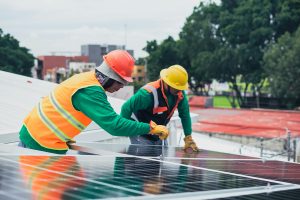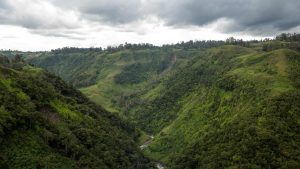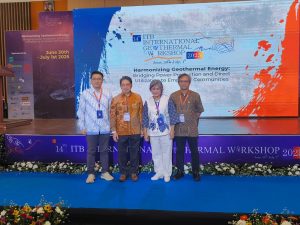by: Roffie Kurniawan
Jakarta – Green loan allocation of major domestic banks is rising, although the portion of green loans compared to total loans remains relatively low. The trend indicates greater demand for green projects.
A green loan is a form of financing that enables borrowers to use the proceeds to fund projects that substantially contribute to an environmental objective exclusively.
For example, Indonesia’s largest bank in terms of assets, PT Bank Mandiri Tbk, expects its sustainable portfolio to grow by 10% in 2024 compared to the previous year and further increase in the following year. The bank has so far implemented a comprehensive strategy focusing on sustainable financing, covering environmental and social aspects.
This strategy includes providing various innovative financing products, such as sustainability-linked loans, corporate in transition financing, green/social/sustainability loans, and issuing green bonds and other sustainable financial instruments.
Bank Mandiri’s Senior Vice President ESG Group Citra Amelya Pane said that the growth of green loans was driven by contributions from strategic sectors that align with government priorities. “We are optimistic that this positive trend will continue and drive more significant growth until next year,” Citra was quoted by kontan.co.id as saying.
As of September 2024, Bank Mandiri’s sustainable portfolio increased by 12.8%, reaching Rp285 trillion compared to the previous year. The green portfolio, part of a sustainable portfolio, recorded a higher growth of 16.4%, reaching Rp142 trillion. The portion of the sustainable portfolio compared to total credit was 23% in the nine months to September period.
“We anticipate growth in these sectors, especially in sectors that drive the national agenda such as renewable energy, down-streaming, and economic equality,” Citra said.
The three driving sectors of the green portfolio are environmentally friendly transportation, growing by 94.6% annually; eco-efficient products, growing by 78.3% annually; and green buildings growing by 58.7% annually.
BNI Risk Management Director David Pirzada said that the bank is committed to continuing to develop a green portfolio, where the green financing target in 2024 is Rp71.27 trillion.
He expects BNI’s green portfolio to expand further in 2025, considering the open market potential.
In the nine months, BNI has allocated green credit, reaching Rp70.9 trillion. Green financing grew by 17% year-on-year, driven by the increasing awareness of business players about carrying out green projects to develop a green economy.
The bank provided green credits to several sectors, including renewable energy, amounting to Rp10.2 trillion, management of natural resources and sustainable land use of R31.9 trillion, and environmentally friendly transportation of Rp3.5 trillion.
Private commercial bank PT Bank Danamon Indonesia Tbk also continues to promote its sustainable business growth. In supporting this initiative, Danamon implements concrete steps to implement ESG principles.
“One of our initiatives is to collaborate with Adira Finance to channel credit for environmentally friendly transportation,” said Herry Hykmanto, Director of Sharia and Sustainability Finance at Bank Danamon.
As of the third quarter of 2024, PT Adira Dinamika Multi Finance Tbk (Adira Finance), a subsidiary of Bank Danamon, has allocated credit for electric-based vehicles amounting to Rp290 billion in the nine-month period. The bank, he said, will continue to strengthen support for the distribution of green credits in the renewable energy sector, with a focus on financing in the retail, corporate, and community sectors.
Through these steps, the bank hopes to continue to support the transition to more environmentally friendly energy sources in line with government policy.
By the end of this year, Bank Danamon is also projecting an increase of around 2% in the sustainable finance portfolio from the total sustainable finance financing annually and a further increase this year (2025).
Indonesia apparently offers attractive investments for green energy, power and transportation projects. However, some analysts say that new policies are required to accelerate investment in green projects.
Renewable investments in Southeast Asia are projected to surpass $76 billion between 2023 and 2025 and hit $119 billion by 2027, driven by solar, wind, and geothermal, according to Rystad Energy’s recent report.
Bain & Company warned in April last year that Southeast Asia is lagging on green investments and emission reduction targets and requires new policies and financial mechanisms to bridge the gap. The agency highlights the need for collaboration and harmonised renewable energy policies to foster a more predictable and investor-friendly environment.













